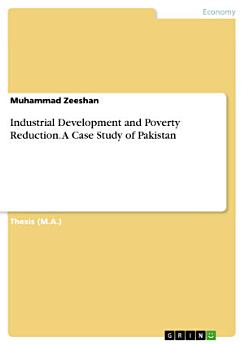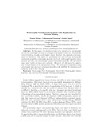Industrial Development and Poverty Reduction. A Case Study of Pakistan
Muhammad Zeeshan
Jun 2019 · GRIN Verlag
Ebook
74
Pages
family_home
Eligible
info
reportRatings and reviews aren’t verified Learn More
About this ebook
Thesis (M.A.) from the year 2013 in the subject Business economics - Economic Policy, grade: 3.25/4.00, University of the Punjab (UNIVERSITY OF THE PUNJAB LAHORE PAKISTAN - DEPARTMENT OF ECONOMICS), course: DEVELOPMENT ECONOMICS, language: English, abstract: This purpose of this research is to explore the relationship between industrial development and poverty reduction in case of Pakistan. The data is taken from 1975 to 2010. It takes the hypothesis that industrial development will decrease poverty through increased employment and rise in the per capita income. All the variables used in the model are stationary at 1st difference. I have employed ARDL approach to Co-integration to find relationship between industrial development and poverty reduction. The approach and findings of the study are compared with that of regional and East Asian countries, which have developed through industrialization. The t-values for LINDG is highest among the independent variables, which means growth in industry can reduce the poverty to greater extent. The population growth of Pakistan is quite high, by increasing the literacy rate; we can make the labor skilled, increasing human capital, that will lead to more jobs and earning opportunities, reducing poverty.
Rate this ebook
Tell us what you think.
Reading information
Smartphones and tablets
Install the Google Play Books app for Android and iPad/iPhone. It syncs automatically with your account and allows you to read online or offline wherever you are.
Laptops and computers
You can listen to audiobooks purchased on Google Play using your computer's web browser.
eReaders and other devices
To read on e-ink devices like Kobo eReaders, you'll need to download a file and transfer it to your device. Follow the detailed Help Center instructions to transfer the files to supported eReaders.








